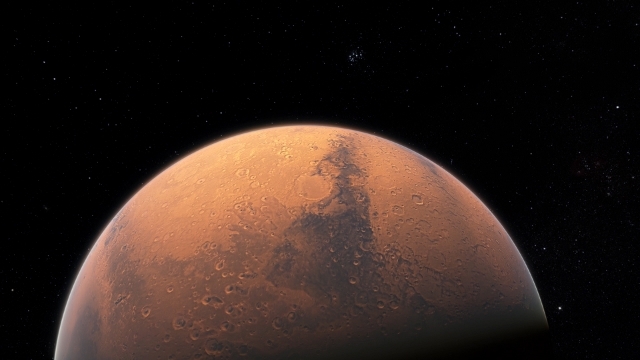It’s difficult to imagine where space-themed film soundtracks would be without “The Planets.” Gustav Holst’s orchestral suite has captivated audiences since its 1916 premiere, but also heavily inspired today’s masters of extraterrestrial music, John Williams and Hans Zimmer.
Little was known about the physical characteristics of our solar system’s planets when Holst composed “The Planets.” Each of the seven pieces portray the astrological traits of the planets seen from Earth at the time (Pluto was yet to be discovered). On Friday night, The Grand Rapids Symphony orchestra, led by Music Director Marcelo Lehninger, probed the depths of the human psyche through Holst’s epic score.
The first half of the concert riffed on the celestial theme with the overture to Franz Joseph Haydn’s opera “Il mondo della luna (The World on the Moon)” and Mozart’s “Symphony No. 41,” eventually dubbed “Jupiter” for hazy reasons. The GRS played the short and light Haydn piece with confident agility, while its interpretation of the Mozart vacillated between exuberance, introspection and complexity.
The orchestra, bolstered by a sundry of supplemental musicians, turned to “The Planets” in the second half, opening with “Mars, the Bringer of War.” Lehninger set a militaristic and mechanical tone that steadily grew to be more menacing in its depiction of war. The euphonium soloist fought a valiant battle against a calvary of trumpets, and the sounds of a ravaged battlefield rumbled through the hall with the final, vicious chords.
Visions of a verdant, tranquil garden quickly took hold with “Venus, the Bringer of Peace.” Gentle melodies from the harps and flutes, an ethereal solo from Concertmaster James Crawford, and velvety tones from Principal Horn Richard Britsch and Principal Cello Alicia Eppinga contributed to a beautifully eerie soundscape. “Mercury, the Winged Messenger,” the shortest movement of the suite, was imbued with curiosity. Wisps of notes took the shapes of busy hummingbirds, dovetailing and darting from section to section.
“Jupiter, the Bringer of Jollity” was a majestic highlight of the evening. Beginning with six french horns boldly introducing the syncopated main theme over a full force of strings, the music quickly swelled to exhilarating heights. The orchestra traversed the piece’s many memorable tunes with ease, including the poignant, pastoral theme now popularly known as the British hymn, “I Vow to Thee My Country.”
A favorite movement of Holst’s, “Saturn, the Bringer of Old Age” is drastic shift from the buoyant music of “Jupiter.” While other movements embody a single character, “Saturn” depicts a journey from dread and despair to autumnal calm. The orchestra masterfully developed this transformation, and careful interplay between the organ, harps, chimes and strings made for a serene close.
The brass section returned with a commanding presence during the boisterous and eccentric “Uranus, the Magician.” To conclude the suite, the Grand Rapids Symphony Chorus made an offstage appearance during “Neptune, the Mystic” to chilling effect. As the onstage sounds slowly dissipated, the disembodied voices of the chorus remained until the gradual fade out, leaving the audience to ponder the infinite unknown.
The Grand Rapids Symphony partnered with the Roger B. Chaffee Planetarium at the Grand Rapids Public Museum to provide imagery and simulations of the planets, galaxies and satellites throughout the performance. I’d argue that Holst’s music is vivid enough on its own to spur the imagination, but it was wonderful to see two cultural institutions collaborate to add a visual dimension.
The Planets
Grand Rapids Symphony
Feb. 2-3
grsymphony.org





